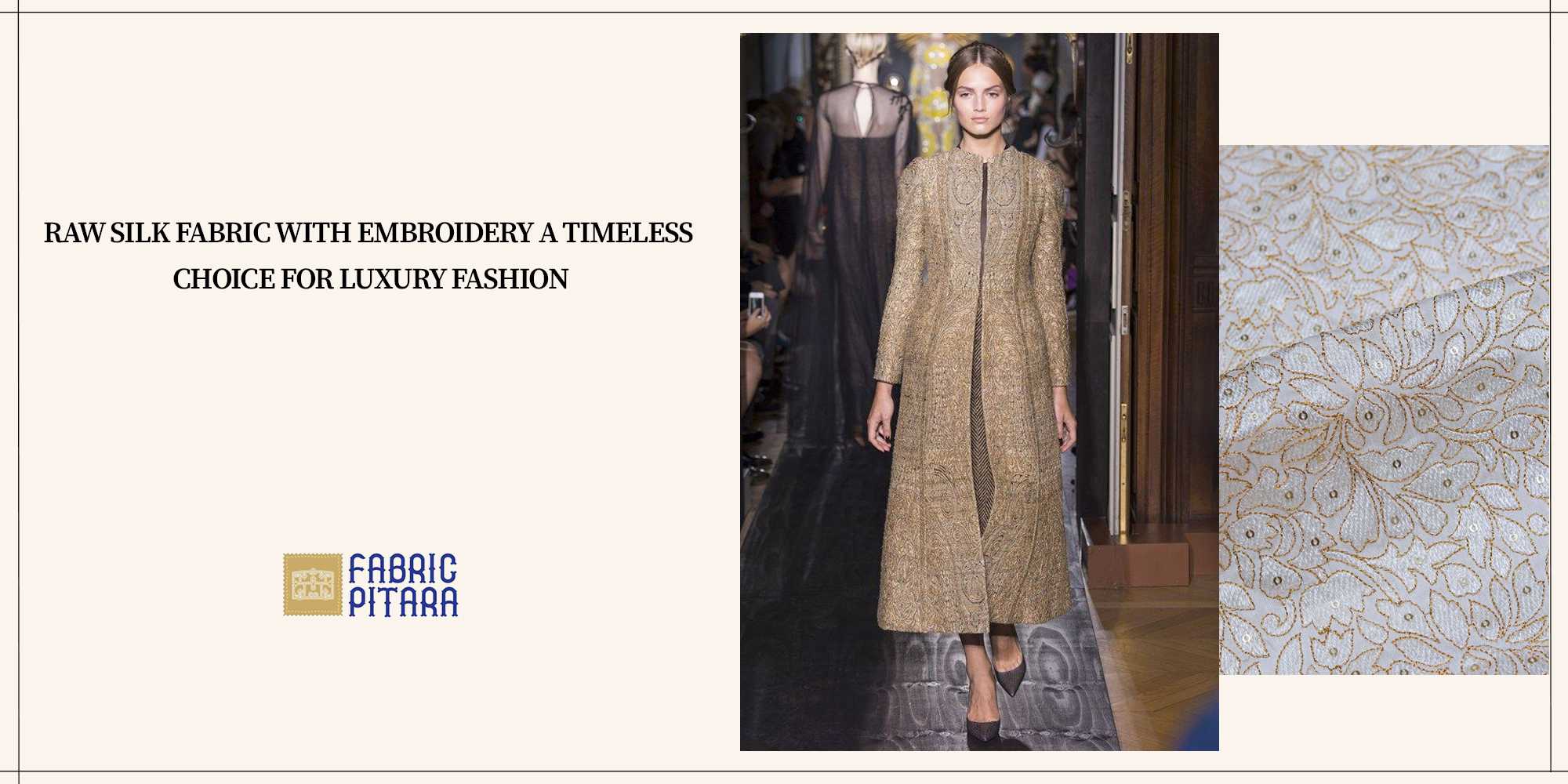![[A young woman in a traditional saree stands before colorful fabrics. She wears a nose stud, ornate earrings, and smiles serenely, highlighting the intricate designs and cultural richness of her attire]-[fabricpitara]](https://fabricpitara.com/media/magefan_blog/Printed-Saree_11zon_11zon.jpg)
Digital Printed Fabrics: The Future of Fashion and Design
Digital Printing on Fabric is transforming the textile industry with its modern method of printing designs using modern digital technology. Traditional quality and flexibility are suitable with digital printing compared to standard methods like screen printing. During this technique, large-format printers are used to print directly into the fabric using dye or paint; these printers function similarly to inkjet printers on paper but are modified for textiles.
What is Digital Printing on Fabric?
Digital printing on cloth represents an enormous advancement in textile production. Traditional printing methods, together with display printing, require the introduction of bodily displays for every coloration in a layout, that is both time-eating and pricey. In comparison, virtual printing uses laptop technology to directly apply the design to the material.
This not only speeds up the production process but also allows for more intricate and detailed patterns that were previously difficult to achieve.
The Rise of Digital Print
One of the most popular applications of this technology is in the creation of digital print suit sets. Fashion designers and producers are increasingly adopting digital printing to supply vibrant and designated styles on match units. The ability to print complicated designs fast and efficiently makes it a great desire for mass manufacturing and custom-made apparel. With virtual print-in-shape sets, designers can experiment with a huge range of colors and styles, pushing the boundaries of conventional fashion. This era additionally allows for customization, enabling clients to customize their garb with specific designs and prints.
Exploring Digital Print Design on Fabric
The versatility of digital print design on fabric is unmatched. Designers can create intricate patterns, photographic images, and even replicate paintings with remarkable accuracy. This opens up a global of possibilities for domestic decor, accessories, and clothing. Digital printing additionally permits for small batch production, making it simpler for impartial designers to deliver their precise visions to lifestyles without the need for huge-scale production. This flexibility is in particular fantastic for niche markets and bespoke style, wherein particular and limited-version designs are exceptionally valued.
The Elegance of Organza Digital Print Fabric
Organza digital print fabric is a testament to the advancements in digital textile printing. Organza, a lightweight, sheer fabric, is traditionally difficult to print on due to its delicate nature. However, virtual printing technology has made it feasible to use distinct and vibrant designs to organize without compromising its texture and feel. This has revolutionized the manufacturing of stylish clothes and accessories, inclusive of evening robes and scarves, permitting for classy and intricate designs that were formerly not possible.
The use of organza digital print fabric in high fashion showcases the technology's ability to transform even the most delicate textiles into works of art.
Benefits and Future of Digital Printing on Fabric
Digital printing on fabric offers numerous benefits over traditional methods. It reduces waste by using less water and chemicals, and it allows for on-demand production, minimizing excess inventory. Additionally, digital printing is faster and extra cost-effective for short runs and custom designs. This environmentally friendly issue is increasingly more important in modern-day sustainable fashion, where lowering the enterprise's ecological footprint is a pinnacle of precedence.
As technology continues to advance, the future of digital printing on fabric looks promising. Innovations in printer technology, ink formulations, and fabric treatments are expected to further enhance the quality and durability of digitally printed textiles.
This will likely lead to even more adoption of virtual printing in the fashion and fabric industries. Enhanced color accuracy, progressed ink adhesion, and accelerated production speeds are only a few of the tendencies on the horizon, including the ability to incorporate painted strokes and splashes, which will make digital printing even more attractive to manufacturers.
Conclusion
Digital printing on fabric is revolutionizing textile creation and experience, offering endless possibilities for designers and manufacturers. From digital print shirt fabric to delicate organza, this technology enhances creativity and innovation. It provides flexibility, precision, and sustainability, making custom and intricate designs more accessible.
Embracing digital printing meets the demand for unique, high-quality, and eco-friendly products, redefining textile production standards.







